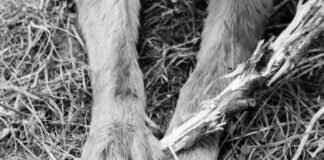Asian Massage Therapy is a fascinating field that merges ancient techniques with modern practices, offering a unique approach to health and wellness. This article delves into the multifaceted world of Asian massage therapy, exploring its rich history, diverse techniques, and the myriad benefits it provides. By harmonizing Eastern philosophies with Western methodologies, this therapy promotes holistic well-being and caters to a wide audience seeking relaxation and rejuvenation.
What is Asian Massage Therapy?
Asian massage therapy is an umbrella term that encompasses various traditional practices aimed at restoring balance to the mind, body, and spirit. Techniques such as Shiatsu, Thai massage, and Tui Na are rooted in ancient philosophies that emphasize energy flow and physical manipulation to facilitate healing and relaxation.
History and Origins of Asian Massage
The origins of Asian massage can be traced back thousands of years, with each culture contributing its unique practices. For instance, Chinese massage is deeply intertwined with concepts of Qi (energy) and meridians, while Thai massage incorporates elements of yoga and meditation.
Chinese Massage Techniques
- Tui Na: This technique uses hand movements to apply pressure along the body’s meridians, promoting energy flow and alleviating pain.
- Acupressure: By targeting specific pressure points, acupressure helps release tension and stimulates the body’s natural healing processes.
Benefits of Tui Na
Tui Na is not only effective for pain relief but also enhances circulation, reduces stress, and improves mobility, making it a popular choice for therapeutic treatments.
Thai Massage Practices
Thai massage is characterized by its unique blend of stretching and deep tissue work, encouraging flexibility and a meditative state, which can significantly enhance mental clarity.
Physical Health Benefits
Asian massage therapy offers numerous physical benefits, including:
- Pain relief
- Improved circulation
- Enhanced muscle flexibility
Mental and Emotional Well-Being
In addition to physical health, Asian massage promotes emotional balance, helping individuals manage stress and anxiety through relaxation techniques.
Integrating Western Techniques with Asian Practices
The fusion of Western massage techniques, such as Swedish and deep tissue massage, with Asian practices creates a comprehensive approach that addresses both physical and emotional needs.
Choosing the Right Asian Massage Therapy for You
When selecting an Asian massage therapy style, consider your personal needs and preferences. Consulting with a qualified therapist can help tailor the experience to your specific requirements.
Finding a Reputable Spa or Therapist
Conducting thorough research to find a reputable spa or therapist is crucial for ensuring quality care and effective treatment.

What is Asian Massage Therapy?
Asian massage therapy is a holistic practice that integrates ancient techniques from various Eastern cultures, focusing on achieving a harmonious balance between the mind, body, and spirit. This therapy is designed not only to promote relaxation but also to facilitate healing through a variety of methods that have been refined over centuries.
The essence of Asian massage therapy lies in its diverse techniques, which include practices such as Tui Na, Shiatsu, and Thai massage. Each technique has its unique approach and philosophy, yet they all share a common goal: to enhance overall well-being. By utilizing a combination of pressure points, stretching, and energy flow, these therapies aim to alleviate tension, reduce stress, and improve physical health.
One of the defining characteristics of Asian massage therapy is its foundation in traditional Eastern philosophies, particularly the concept of Qi (or energy) flow. Practitioners believe that blockages in this energy can lead to physical and emotional ailments. Therefore, techniques such as acupressure are used to stimulate specific points on the body, helping to restore balance and promote the body’s natural healing abilities.
Moreover, Asian massage therapy is not just about physical touch; it encompasses a comprehensive approach that includes mindfulness and breath control. This integration of mental and physical practices enhances the therapeutic experience, allowing individuals to achieve a deeper state of relaxation and mental clarity.
In summary, Asian massage therapy is a multifaceted practice that draws from rich cultural traditions. By focusing on the interplay between the mind, body, and spirit, it offers a unique and effective method for achieving holistic health and wellness.

History and Origins of Asian Massage
Asian massage therapy is not just a practice; it is a cultural tapestry woven through centuries of tradition and healing. The history of Asian massage is as diverse as the regions it originates from, with significant contributions from various cultures, including Chinese, Thai, and Indian traditions. Each of these cultures has developed unique practices that reflect their philosophies of health and wellness.
In China, the roots of massage therapy can be traced back over 2,500 years. The ancient practice of Tui Na combines massage techniques with principles of Traditional Chinese Medicine (TCM), focusing on the flow of Qi (energy) through the body’s meridians. This method emphasizes the connection between physical health and emotional well-being, aiming to restore balance and harmony.
Thai massage, on the other hand, has its origins in the teachings of Jivaka Kumar Bhaccha, a physician to the Buddha, and dates back over 2,500 years as well. This practice uniquely blends elements of yoga and acupressure, using a series of stretches and deep tissue work to enhance flexibility and promote relaxation. The emphasis on mindfulness during Thai massage fosters a deeper connection between the body and mind.
Meanwhile, in India, Ayurvedic massage therapies have been practiced for millennia. These techniques are rooted in the holistic approach of Ayurveda, which seeks to balance the body’s energies (Vata, Pitta, and Kapha) through various forms of massage, including Abhyanga (oil massage) and Shirodhara (oil pouring on the forehead). Each method aims to detoxify the body and promote overall health.
As these ancient practices spread across the globe, they have evolved and merged with Western techniques, creating a rich and varied landscape of massage therapy. Today, Asian massage therapy is celebrated not only for its historical significance but also for its profound impact on physical and mental well-being.
Chinese Massage Techniques
Chinese massage techniques, particularly Tui Na, are deeply rooted in the ancient practices of Traditional Chinese Medicine (TCM). This form of massage goes beyond mere relaxation; it is a therapeutic approach designed to enhance the body’s natural healing abilities.
Tui Na, which translates to “push and grasp,” employs a variety of techniques such as kneading, rolling, and pressing. These methods are specifically aimed at stimulating the body’s meridians—the pathways through which vital energy, or Qi, flows. By focusing on these energy pathways, Tui Na seeks to alleviate pain and restore balance within the body.
- Acupressure: This technique involves applying pressure to specific points on the body, similar to acupuncture but without needles. It is believed to help release blockages in energy flow, promoting relaxation and healing.
- Joint Mobilization: Tui Na often includes gentle manipulation of the joints, which can enhance mobility and reduce stiffness. This is particularly beneficial for individuals suffering from arthritis or muscle tension.
- Stretching Techniques: Incorporating stretches into the massage helps improve flexibility and range of motion. These techniques are especially useful for athletes or those engaged in physical activities.
The benefits of Tui Na extend beyond physical relief. Many practitioners report enhanced mental clarity and emotional balance following a session. This holistic approach not only addresses physical ailments but also promotes overall well-being.
In summary, , especially Tui Na, offer a comprehensive method for addressing both physical and emotional health. By integrating acupressure and meridian theory, Tui Na serves as a powerful tool for restoring harmony within the body.
Understanding Acupressure
Acupressure is an essential element of traditional Chinese massage, known for its ability to harness the body’s natural energy flow. By applying pressure to specific acupoints, practitioners aim to relieve tension and promote healing. This ancient practice is based on the belief that the body has a network of energy pathways, or meridians, that can be stimulated to enhance overall well-being.
At its core, acupressure focuses on the principle that physical and emotional health are interconnected. When pressure is applied to these strategic points, it can lead to the release of endorphins, the body’s natural painkillers, and stimulate blood circulation. This not only alleviates discomfort but also encourages the body’s innate ability to heal itself.
One of the most significant aspects of acupressure is its versatility. It can be used to address a wide range of issues, including:
- Chronic pain – such as back pain, headaches, and arthritis.
- Stress and anxiety – promoting relaxation and emotional balance.
- Digestive issues – helping to alleviate symptoms of indigestion and nausea.
- Sleep disorders – improving sleep quality by calming the mind.
In addition to these benefits, acupressure can be easily integrated into daily life. Individuals can learn simple techniques to apply pressure to specific points on their own bodies, making it a convenient option for self-care. For example, pressing the LI4 point (located between the thumb and index finger) can help relieve headaches and reduce stress.
Furthermore, acupressure is often combined with other therapeutic practices, such as Tui Na or aromatherapy, to enhance its effects. This blending of techniques allows for a more comprehensive approach to healing, catering to both physical and emotional needs.
Overall, understanding and utilizing acupressure can empower individuals to take control of their health, promoting a sense of well-being that resonates throughout the body and mind.
Benefits of Tui Na
Tui Na, a traditional Chinese therapeutic massage technique, is renowned for its multifaceted benefits that extend beyond mere relaxation. This form of bodywork is deeply rooted in the principles of Traditional Chinese Medicine (TCM), focusing on the flow of Qi (energy) through the body’s meridians. By applying various hand techniques, Tui Na practitioners facilitate the body’s natural healing processes, resulting in a plethora of advantages.
- Improved Circulation: Tui Na enhances blood flow, which is crucial for delivering oxygen and nutrients to tissues. This increased circulation can help in the recovery of injuries and improve overall organ function.
- Stress Relief: The rhythmic motions and pressure applied during Tui Na sessions can significantly reduce stress levels. This therapeutic approach promotes relaxation, helping to alleviate symptoms associated with anxiety and tension.
- Enhanced Mobility: By targeting specific muscles and joints, Tui Na increases flexibility and range of motion. This is particularly beneficial for individuals suffering from stiffness or chronic pain conditions.
- Pain Management: Tui Na is effective in relieving various types of pain, including headaches, back pain, and joint discomfort. The technique focuses on pressure points that correspond to different body areas, providing relief without the use of medication.
- Boosted Immune Function: Regular Tui Na treatments can enhance the immune system’s efficiency, making the body more resilient to illnesses and infections.
- Emotional Balance: The holistic nature of Tui Na not only addresses physical ailments but also promotes emotional well-being. By balancing the body’s energy, it helps to stabilize mood and reduce feelings of depression.
Overall, Tui Na is a versatile therapy that caters to a wide range of health issues. Its ability to combine physical, mental, and emotional healing makes it a valuable addition to any wellness routine.
Thai Massage Practices
Thai massage is a unique and ancient form of bodywork that has gained popularity worldwide for its holistic approach to healing. This practice intricately weaves together the principles of yoga, acupressure, and meditation, creating a comprehensive treatment that addresses both physical and mental well-being. Unlike typical massages that focus solely on relaxation, Thai massage promotes flexibility, enhances energy flow, and encourages a deep state of relaxation.
At the heart of Thai massage are yoga-like stretches that help to improve flexibility and range of motion. These stretches are often performed passively, allowing the therapist to guide the recipient through a series of movements that gently elongate muscles and release tension. This technique not only aids in physical flexibility but also encourages a sense of mental clarity and peace.
In addition to stretching, Thai massage incorporates deep tissue work that targets specific pressure points throughout the body. This method is designed to relieve muscle tension and promote blood circulation, which can lead to improved overall health. The combination of stretching and pressure techniques creates a balanced approach that can alleviate chronic pain and enhance physical performance.
Furthermore, Thai massage encourages a meditative state of mind. As practitioners engage in mindful breathing and focus on the sensations of their bodies, they can achieve a deeper connection with themselves. This meditative aspect not only enhances the physical benefits of the massage but also contributes to emotional healing and stress reduction.
Overall, Thai massage is a powerful therapy that harmonizes the body and mind, making it an excellent choice for those seeking a holistic approach to wellness. Whether you are looking to relieve tension, improve flexibility, or simply find a moment of peace in your busy life, Thai massage offers a comprehensive solution that nurtures both body and spirit.

Benefits of Asian Massage Therapy
Asian massage therapy is a time-honored practice that offers a myriad of physical and mental benefits, making it a holistic approach to well-being. This therapy draws from ancient traditions and integrates various techniques that foster relaxation, healing, and rejuvenation.
- Pain Relief: Many individuals seek Asian massage for its effectiveness in alleviating chronic pain, whether it be from tension headaches, back pain, or muscle soreness. Techniques such as Tui Na and Shiatsu focus on pressure points that help release tension and promote healing.
- Improved Circulation: The rhythmic movements and pressure applied during Asian massage enhance blood flow, which can lead to better oxygenation of tissues and improved overall health.
- Enhanced Flexibility: Practices like Thai massage incorporate stretching elements that not only relieve tension but also improve flexibility and range of motion, making it beneficial for athletes and those with physically demanding lifestyles.
- Stress Reduction: The relaxing nature of Asian massage therapy helps to lower stress levels significantly. Techniques that involve deep breathing and mindfulness can lead to a profound sense of calm.
- Emotional Balance: By promoting relaxation and reducing tension, Asian massage can help individuals manage anxiety and depression. The connection between mind and body is emphasized, encouraging a holistic approach to mental health.
- Enhanced Mental Clarity: Regular sessions can lead to improved focus and mental clarity, as the relaxation techniques employed help clear mental fog and promote a sense of well-being.
In summary, Asian massage therapy is not merely a physical treatment; it is a comprehensive approach that nurtures both the body and mind. By balancing physical health with mental and emotional well-being, it appeals to a diverse range of individuals seeking to enhance their overall quality of life.
Physical Health Benefits
Asian massage therapy is renowned for its ability to enhance physical health through various techniques that have been practiced for centuries. The of this therapy are not only profound but also multifaceted, addressing a wide range of ailments and promoting overall well-being.
One of the most significant advantages of Asian massage therapy is its capability to provide pain relief. Techniques such as Tui Na and Shiatsu focus on pressure points and energy pathways, effectively alleviating discomfort in areas such as the back, neck, and shoulders. By manipulating these points, therapists can release tension and reduce chronic pain, offering a natural alternative to pharmaceuticals.
In addition to pain relief, Asian massage therapy significantly improves circulation. The various strokes and movements employed during a session stimulate blood flow, ensuring that oxygen and nutrients are efficiently delivered to tissues throughout the body. Enhanced circulation not only promotes healing but also contributes to a more vibrant and energetic feeling, reducing fatigue and lethargy.
Another vital benefit is the enhancement of muscle flexibility. Techniques that incorporate stretching, such as Thai massage, help to elongate muscles and improve their range of motion. This increased flexibility can lead to better athletic performance and a lower risk of injuries, making it particularly beneficial for active individuals.
Furthermore, the overall impact of these physical benefits contributes to a heightened sense of vitality. Individuals who regularly engage in Asian massage therapy often report feeling rejuvenated and more in tune with their bodies. This holistic approach not only addresses physical symptoms but also fosters a deeper connection between the mind and body, promoting a balanced state of health.
In summary, the physical health benefits of Asian massage therapy, including pain relief, improved circulation, and enhanced muscle flexibility, play a crucial role in supporting overall physical health and vitality. By integrating these practices into regular wellness routines, individuals can experience a significant enhancement in their quality of life.
Mental and Emotional Well-Being
Asian massage therapy offers profound benefits for mental and emotional health, serving as a powerful tool for achieving inner peace and stability. Through a combination of ancient techniques and mindful practices, this form of therapy helps individuals navigate the complexities of modern life.
One of the key aspects of Asian massage therapy is its ability to promote mental clarity. By engaging in relaxation techniques, such as deep breathing and focused attention, individuals can clear their minds of distracting thoughts. This mental decluttering is essential for enhancing focus and productivity in daily tasks.
Moreover, the holistic nature of these therapies encourages a deeper connection between the body and mind. Practices like acupressure and Shiatsu not only alleviate physical tension but also release emotional blockages. This release fosters a sense of emotional balance, helping individuals manage feelings of stress and anxiety more effectively.
- Stress Management: Regular sessions can significantly lower stress levels by activating the body’s relaxation response.
- Anxiety Reduction: Techniques such as rhythmic pressure and gentle stretching can calm the nervous system.
- Emotional Release: Many individuals report feelings of catharsis during or after a session, allowing for emotional healing.
Mindfulness is another critical element integrated into Asian massage therapy. Practitioners encourage clients to be present in the moment, focusing on their bodily sensations and emotions. This practice not only enhances the therapeutic experience but also cultivates a sense of self-awareness that can lead to long-term emotional resilience.
In summary, Asian massage therapy is not just about physical relaxation; it plays a vital role in enhancing mental clarity and emotional balance. By incorporating these practices into one’s routine, individuals can achieve a more harmonious state of being, effectively managing stress and anxiety while promoting overall well-being.

Integrating Western Techniques with Asian Practices
The integration of Western massage techniques with Asian practices marks a significant evolution in the field of massage therapy. This fusion not only enhances the therapeutic experience but also addresses a broader spectrum of physical and emotional needs.
Western techniques, such as Swedish massage and deep tissue massage, are known for their focus on muscle relaxation and pain relief. Swedish massage employs long, flowing strokes to promote relaxation and improve circulation, while deep tissue massage targets deeper layers of muscle and connective tissue to alleviate chronic pain. When these methods are combined with Eastern practices like Tui Na and Thai massage, the result is a holistic approach that nurtures both the body and the mind.
This holistic approach emphasizes the interconnectedness of body and mind. By recognizing that emotional well-being can significantly impact physical health, therapists are able to tailor treatments that cater to individual needs. For instance, integrating aromatherapy with acupressure can elevate the sensory experience, enhancing relaxation and promoting a deeper state of healing.
- Swedish and Thai Massage: This combination incorporates the gentle, flowing movements of Swedish massage with the stretching techniques of Thai massage, resulting in a deeply relaxing yet invigorating session.
- Deep Tissue and Tui Na: By merging the intense pressure of deep tissue techniques with the energy-focused approach of Tui Na, clients can experience profound relief from tension and stress.
- Aromatherapy and Acupressure: The use of essential oils alongside acupressure points can enhance emotional balance and promote a sense of tranquility.
Incorporating these diverse techniques not only maximizes health benefits but also provides a unique and personalized experience for each client. As therapists continue to explore and refine these integrative methods, the potential for improved well-being and healing becomes increasingly accessible.
Holistic Healing Approach
In the realm of wellness, the stands out for its comprehensive understanding of the intricate relationship between the body and mind. This method emphasizes that physical ailments often stem from emotional or psychological factors, creating a need for therapies that address both aspects simultaneously. By recognizing this interconnectedness, therapists can design personalized treatments that cater to individual needs, preferences, and health concerns.
Holistic healing is not merely about alleviating symptoms; it aims to promote overall well-being by fostering balance and harmony within the individual. This approach allows practitioners to utilize a variety of techniques, including massage, meditation, and breathing exercises, to create a tailored experience for each client. For instance, a therapist might integrate acupressure with relaxation techniques to relieve tension and anxiety, thereby enhancing the client’s physical and emotional state.
Moreover, the holistic approach encourages clients to actively participate in their healing journey. This can involve education about self-care practices, lifestyle changes, and mindfulness techniques that empower individuals to take charge of their health. By fostering a deeper understanding of one’s body and mind, clients can develop a stronger connection to their well-being.
Additionally, the holistic model promotes the idea that healing is a continuous process. It encourages individuals to view their health as a dynamic interplay of various factors rather than a static condition. This perspective can lead to long-term benefits, as clients learn to recognize and address imbalances before they manifest as physical symptoms.
In summary, the holistic healing approach is a profound method that acknowledges the interconnectedness of body and mind. By tailoring treatments to individual needs and fostering an active role in the healing process, therapists can significantly enhance the overall well-being of their clients.
Popular Combination Techniques
In the realm of wellness, the fusion of Eastern and Western practices has led to the emergence of in massage therapy. These innovative methods not only enhance the therapeutic experience but also maximize health benefits, catering to a diverse clientele seeking holistic healing.
One of the most effective combinations is the integration of aromatherapy with acupressure. Aromatherapy involves the use of essential oils, which can promote relaxation, invigorate the senses, or even alleviate pain. When paired with acupressure, which focuses on stimulating specific pressure points, the effects can be profoundly enhanced. For instance, the calming scent of lavender oil can complement acupressure techniques aimed at relieving stress and tension, creating a more profound sense of relaxation.
Another popular technique is the combination of Thai massage with deep tissue therapy. Thai massage incorporates stretching and yoga-like movements that improve flexibility and circulation. When combined with deep tissue techniques, which target deeper layers of muscle and connective tissue, clients experience not only enhanced mobility but also significant relief from chronic pain. This combination is particularly beneficial for athletes and individuals with physically demanding lifestyles.
Additionally, hot stone therapy is frequently blended with traditional Asian modalities. The soothing heat from the stones can relax muscles, allowing for deeper manipulation during a massage. This technique is often paired with Shiatsu, a Japanese form of massage that applies pressure to specific points, further enhancing the overall therapeutic effect.
These combination techniques exemplify how integrating diverse practices can lead to a more comprehensive and personalized approach to wellness. By recognizing the unique benefits of each method, therapists can create tailored experiences that address both physical and emotional needs, ultimately promoting a state of holistic well-being.

Choosing the Right Asian Massage Therapy for You
is a vital step towards achieving optimal well-being. With a variety of techniques available, it is essential to consider your personal needs, preferences, and any specific health concerns you may have. Understanding these factors will guide you in selecting the most suitable therapy for your unique situation.
First, it’s important to assess your personal needs. Are you seeking relief from chronic pain, relaxation after a stressful week, or perhaps a boost in energy? Identifying your primary goals can help narrow down the types of Asian massage that align with your expectations. For example, if you are looking for pain relief, therapies like Tui Na or Shiatsu may be ideal, as they focus on acupressure and energy flow.
Next, consider your preferences. Different massage styles cater to various tastes. For instance, if you enjoy gentle techniques, Thai massage may appeal to you with its combination of stretching and relaxation. On the other hand, if you prefer deeper tissue work, Deep Tissue Thai or Swedish massage may be more appropriate.
Additionally, it is crucial to take any specific health concerns into account. Individuals with certain medical conditions or injuries should consult with a healthcare provider or a qualified massage therapist to ensure that the chosen therapy is safe and beneficial. For example, those with high blood pressure might need to avoid intense pressure techniques.
Finally, consulting with a professional can provide invaluable insight. A skilled therapist can assess your needs and recommend the most effective techniques tailored to your situation. This personalized approach not only enhances the effectiveness of the treatment but also ensures a more satisfying experience.
In summary, selecting the right Asian massage therapy involves a thoughtful evaluation of your needs, preferences, and health considerations. By taking these factors into account and seeking professional guidance, you can embark on a journey towards improved health and well-being.
Consulting with a Professional
When it comes to **Asian massage therapy**, the benefits can be profound, but the effectiveness of the treatment largely depends on the techniques used and the therapist’s expertise. Consulting with a qualified massage therapist is a crucial step in this journey. They possess the knowledge and skills to help you identify the most suitable techniques tailored to your unique circumstances.
- Personalized Assessment: A professional therapist will begin with an assessment of your physical condition, lifestyle, and specific needs. This initial evaluation is essential for developing a personalized treatment plan.
- Understanding Techniques: Different Asian massage techniques, such as Tui Na or Thai massage, serve various purposes. A skilled therapist will explain these methods and their benefits, helping you choose the right one for your situation.
- Addressing Health Concerns: If you have specific health issues, such as chronic pain or stress, a qualified therapist can recommend techniques that target these concerns effectively.
- Ensuring Safety: Consulting with a professional ensures that any treatment you receive is safe and appropriate for your health status, minimizing the risk of injury.
- Ongoing Support: Your journey doesn’t end after the first session. A qualified therapist can provide ongoing support and adjustments to your treatment plan as needed, ensuring continued progress.
In summary, engaging with a qualified massage therapist is vital for maximizing the benefits of Asian massage therapy. Their expertise not only helps in identifying the best techniques suited to your individual circumstances but also ensures a personalized and effective treatment plan. This collaborative approach fosters a deeper understanding of your body’s needs, paving the way for enhanced well-being and holistic healing.
Finding a Reputable Spa or Therapist
When it comes to experiencing the benefits of Asian massage therapy, the importance of finding a reputable spa or therapist cannot be overstated. The quality of care you receive is directly tied to the expertise and experience of the practitioner, making it essential to conduct thorough research before making a decision.
First and foremost, consider the credentials of the therapist. Look for certifications from recognized institutions, as these indicate a level of professionalism and training in various massage techniques. Additionally, check if they have experience specifically in Asian massage therapies, such as Tui Na or Thai massage, as this specialization can greatly enhance the effectiveness of your treatment.
Next, it’s crucial to read reviews and testimonials from previous clients. Online platforms like Google, Yelp, or specialized wellness forums can provide insights into the experiences of others. Pay attention to comments regarding the therapist’s skill level, the ambiance of the spa, and the overall satisfaction of clients. This feedback can help you gauge the quality of care and the therapeutic environment.
Another important factor to consider is the consultation process. A reputable therapist will take the time to discuss your specific needs, health concerns, and any previous experiences with massage therapy. This initial consultation is vital for tailoring a treatment plan that suits your individual requirements, ensuring a more personalized and effective experience.
Lastly, don’t hesitate to ask questions about the techniques used and the expected outcomes of the therapy. A knowledgeable therapist should be able to explain the methods they employ and how they can benefit your physical and mental well-being. This transparency not only builds trust but also enhances your confidence in the therapeutic process.
In summary, investing time in researching and selecting a reputable spa or therapist is a critical step towards receiving quality care in Asian massage therapy. Your health and well-being deserve the best, so ensure you make an informed choice.
Frequently Asked Questions
- What techniques are commonly used in Asian massage therapy?
Asian massage therapy incorporates various techniques such as Tui Na from Chinese traditions, Thai massage with its unique stretches, and acupressure, all aimed at promoting relaxation and healing.
- How can Asian massage therapy benefit my overall health?
It offers numerous benefits like improved circulation, pain relief, stress reduction, and enhanced flexibility, contributing to both physical and mental well-being.
- Is it safe to combine Asian and Western massage techniques?
Absolutely! Combining these techniques can create a more comprehensive approach to healing, addressing both physical and emotional needs effectively.
- How do I choose the right type of Asian massage for me?
Consider your personal preferences, health concerns, and desired outcomes. Consulting with a qualified therapist can help tailor the experience to your needs.
- What should I look for when finding a reputable massage therapist?
Research their qualifications, experience, and client reviews. A skilled therapist will ensure a safe and effective treatment tailored to your individual needs.














